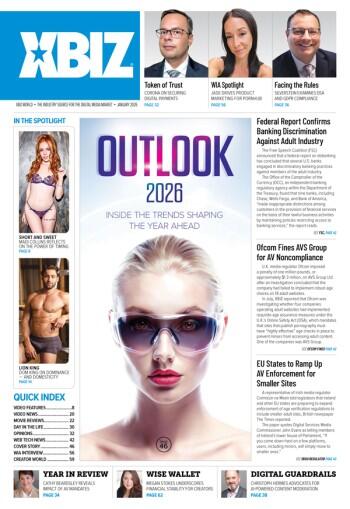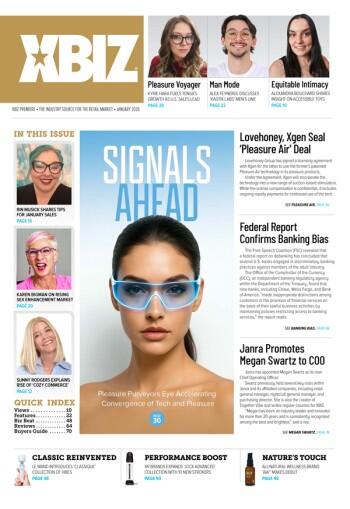We live in a branded world. Every shopping experience, every purchase, even the news and information you consume has been carefully positioned within a story — a narrative meant to lead you through the dizzying array of consumer choices to an emotional relationship with the brands you connect with and buy.
Branding is the development of the story we tell about why a product should exist in the marketplace. I've spent the last 25 years developing brands for the sexual well-being and skin care industries. It's possible that some of the consumer choices you have made, I helped you make. While there is an art to branding, it is definitely a science. So here are some pointers and insights to help start you along on your brand journey.
Brand Strategy
This first step involves defining the brand's purpose, identifying the target audience and creating a unique value proposition. The brand strategy should express personality, voice and tone. Conducting market research to understand the needs and preferences of the target audience and the competitive landscape is paramount. I have created voluminous brand strategies; others are just short emails. Depending on your client, sometimes a brand is just an idea, and the initial brand strategy starts a conversation. Having a clear strategy helps you craft a strong brand, and keeps your vision of the brand aligned with your client's vision. These first efforts lay the foundation upon which everything that follows will rely.
Brand Identity
This is the brand's visual representation, including the logo, color palette, typography and imagery. The brand identity should be consistent across all touch points, including the website, social media profiles and marketing materials. The logo should be simple, memorable and easily recognizable. The color palette should reflect the brand's personality and be used consistently in all visual elements. The typography should be legible and reflect the brand voice. When developing the brand's visual representation, avoid focusing on what you think is most “likeable.” As much as I want everyone to like what I do, my primary aim is to connect with and inspire my target audience. Once trust has been earned, your client will choose a brand that sells over one they merely like.
Brand Voice and Tone
Voice and tone are how your brand communicates with its audience. The language, style and technique used in all communications, from the website copy to social media posts, should reflect the brand personality and be consistent across all touch points. The tone should be appropriate for the audience and the situation. Do your efforts reflect B2B or a B2C communication? Are you using formal language when speaking to a young and informal audience? A good brand strategy will tell you how to talk to your audience.
Brand Messaging
Brand messaging is how the brand communicates its value proposition to its audience. The tagline, mission statement and elevator pitch are all part of brand messaging. The slogan should be memorable and reflect the brand's personality. The mission statement should define the purpose of the brand and the value it provides to its audience. The elevator pitch should concisely summarize the brand's value proposition. I read somewhere that if you cannot explain something briefly, you don't understand it, and I see proof of this every day. The guy who talks the most often knows the least. Keep it brief!
Brand Experience
Brand experience is the way the audience interacts with the brand. The website, social media profiles, customer service and product or service quality are all aspects of your brand experience. The brand experience should be consistent with the brand identity, voice and tone. The website should be user-friendly and reflect the brand's personality. The social media profiles should be engaging and reflect the brand voice. Customer service should be responsive and helpful. The product or service should meet or exceed the expectations of the audience.
Brand Culture
Brand culture is the internal culture of the brand. The values, beliefs and behaviors of a brand's creators, team members and employees constitute its culture. The brand culture should reflect the brand personality and be consistent with brand messaging. Train employees to embody the brand's voice and tone. The brand culture should be aligned with the brand strategy and should support the brand's mission and values. Keep in mind that authenticity sells. If your brand personality is fun and lively, customer service needs to reflect this. Be authentic.
Brand Monitoring
Brand monitoring is the process of tracking the brand's performance and reputation. Monitoring social and traditional media coverage and customer reviews, and recognizing brand sentiment, is essential. Brand monitoring will identify areas for improvement. It should also track the effectiveness of the brand strategy, which you should be ready to adjust as needed. I implore you to do this. It is only by monitoring that we learn.
Building a brand requires careful planning, focused strategy and progressive execution. That is why, as brand creators, we need to know the above steps intimately. We especially need to teach them to our clients, who might otherwise be happy to skip steps and fast-track products. To be successful, your brand journey will require a designer or brand creator who is deeply familiar with the steps to creating a successful brand, and a patient client willing to follow their lead. That relationship will be the key to taking on all of the challenges listed above, and telling your story. Without that relationship and that story — without effective branding — even a quality product is nothing more than a bottle of liquid, a tub of cream or a jar of paste.
Joe Powell is a graphic designer, brand creator and B2B and B2C marketing professional. For over 25 years, he has held remote contract roles in which he specializes in best-practice tactics for visual (brand) identity and product development.








